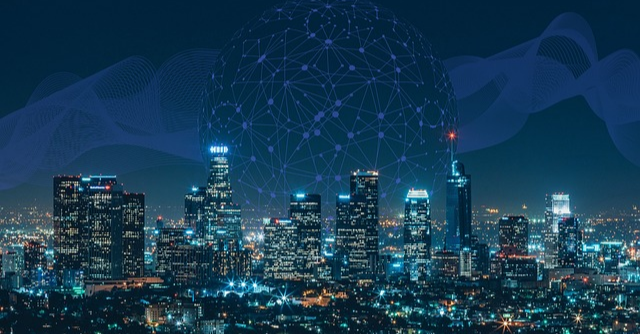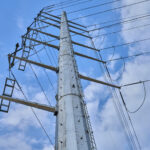Digital Twins: A game-changer for infrastructure management
by Gautam Arjun, Co-Founder and CEO, Kompanions
With aging assets, increasing demands, and limited resources creating major challenges, infrastructure management has always been a difficult and demanding task. However, the development of digital twins is likely to completely change how we handle infrastructure management. A digital twin is a virtual replica of a real-world counterpart of a physical object or system. These digital duplicates change in real time, guided by ongoing data streams from their physical twins.
Sensors, data analytics, and IoT technologies combined have made it possible to create complex digital twins that replicate, track, and evaluate infrastructure performance. Projects like Singapore's "Virtual Singapore" and Kerala's statewide digital twin for urban planning are the main models, which has resulted in a rising acceptance of digital twins in infrastructure management.
Applications in infrastructure management
Design and construction
By offering a 3D visual representation, digital twins are changing the design and building stages of infrastructure projects. Digital twins assist in finding any design flaws, maximize resource allocation, and guarantee better construction execution by visualizing and simulating every element of a project – from design to operation. This helps to enhance collaboration among parties, accuracy, and planning.
Maintenance and operations
Digital twins are very important in predictive maintenance, real-time monitoring, and operational efficiency at the operations and maintenance stage. They allow for pre-emptive interventions by modelling asset behaviour and spotting possible breakdowns, thus prolonging asset lifespan and lowering downtime. Digital twins, for instance, may track and examine data from BIM models and IoT sensors to project maintenance requirements, maximize resource use, and raise operational effectiveness.
Case Studies
- Singapore’s Virtual Singapore: Combining data from several sources to enhance urban planning, infrastructure management, and emergency response, as mentioned above Singapore's "Virtual Singapore" Initiative produced a thorough digital twin of the city. The project has lowered planning expenses, increased public safety, and raised general infrastructure management's general efficiency.
- California’s New Bullards Bar Dam: Using a digital twin, the second-tallest dam in California—the Yuba Water Agency continuously monitors the New Bullards Bar Dam. By means of remote monitoring and inspection made possible by this digital twin coupled with many IoT sensors, time and money are saved as well as danger to staff is lowered.
- Australia’s Rail Network: Over its 9,000 km of rail network, Australian Rail Corporation is putting in place a digital twin. By use of the digital twin, predictive maintenance and early identification of possible faults will enable the business to reduce risk, prevent delays, and eliminate downtime.
- London’s Crossrail: Crossrail is a major infrastructure project in London. Engineers used digital twins to visualize what the final product would look like. In addition, they could monitor the progress of the project and discover potential problems.They used digital twins to simulate and optimize the construction process to streamline the workflow. In addition, they also optimize the use of resources, avoiding waste.
Benefits of digital twins
Cost Savings: Digital twins help to enhance planning, accuracy, and coordination during design and construction, hence reducing mistakes and rework. They help foresee maintenance, real-time monitoring, and practical efficiency in the operations and maintenance phase, therefore reducing expensive, unexpected downtime.
Risk Management: Digital twins provide early interventions and offer insights into possible failures, hence support in mitigating risk. They help stakeholders take proactive actions by modelling asset behaviour and spotting possible problems, guaranteeing the resilience and safety of infrastructure assets.
Sustainability: By optimizing resource usage and lowering environmental impact in both the design, building and operations/maintenance stages, digital twins contribute to a sustainable infrastructure. They help in streamlining maintenance, energy efficiency, and the integration of renewable energy sources in the operations and maintenance phase thereby lowering the general environmental impact of infrastructure assets.
Challenges and Considerations
Data security and privacy: Digital twins need a thorough evaluation of data security and privacy, including merging private data. The security and confidentiality of the data used in digital twins depend on strong data protection systems and encryption techniques.
Data integration: This is one major difficulty is adding digital twin technology into current systems. This comes at a high cost of IOT device installation.
Skill gaps: The efficient use of digital twins requires certain skills and training, which could present difficulties for companies. Successful application and optimization of digital requires focused training programs and the hiring of individuals with relevant experience.
Future trends and innovations
AI and machine learning: Combining artificial intelligence and machine learning with digital twins will improve their predictive power, hence support in more exact forecasting and proactive decision-making.
IoT advancements: Ongoing development in IoT technology, especially the explosion of sensors and connection, will offer more elaborate data and real-time insights. IoT-based HMDs are revolutionizing the design and development of virtual environments. These devices enable users to engage through gestures and touch, they are being built to detect and track hand movements, understand voice commands, and monitor user gaze.
Smart cities: Digital Twins are poised to play a great part in the development of smart cities, it will allow the integration and optimization of many infrastructure systems—from utilities to transportation—to raise general urban efficiency and sustainability.
Conclusion
Digital twins provide a complete and dynamic approach to designing, building, maintenance, and operations, therefore revolutionizing the way we manage infrastructure. Digital twins can make infrastructure more economical, reduce risk, and promote sustainable infrastructure management by using data, simulation, and real-time monitoring. The infrastructure sector is ready for a radical transformation in the years to come as the acceptance of digital twins keeps increasing.
Related Posts
















